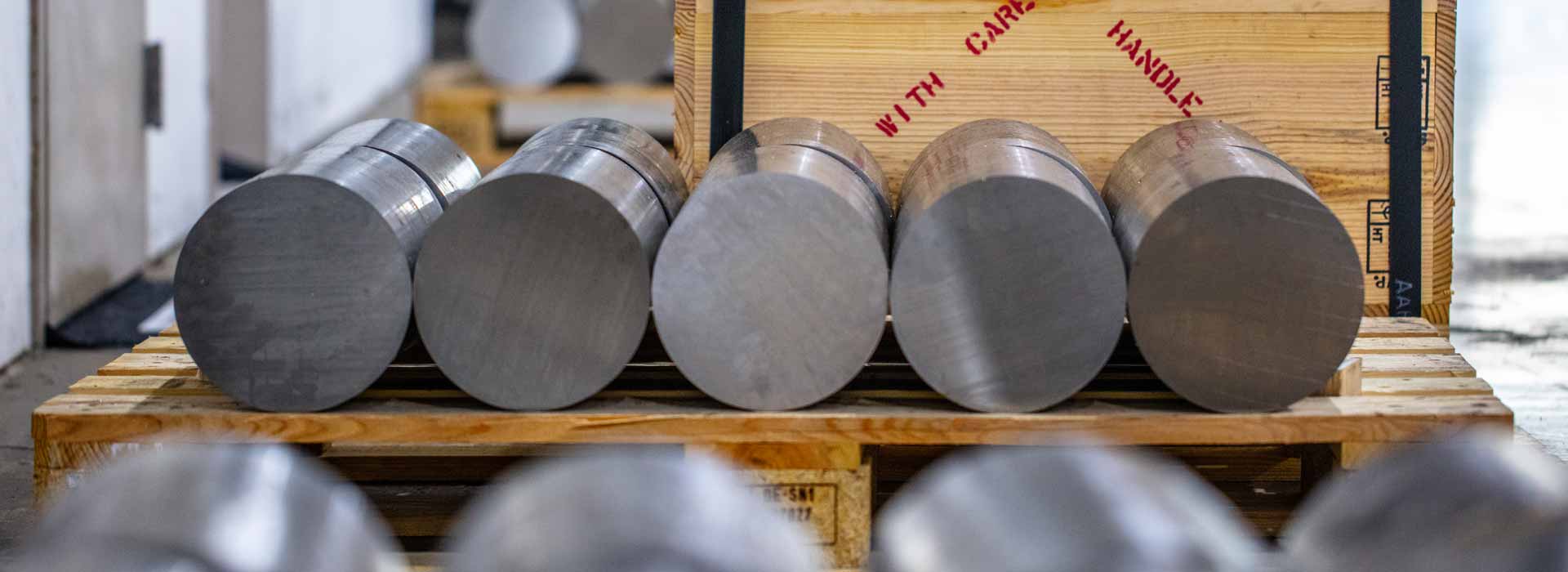Mfrs. standard numbering systems indicating decimal thickness or diameters.
The damaging of one or both metallic surfaces by removal of particles from localized areas due to seizure during sliding friction.
Coating steel with zinc and tin (principally zinc) for rustproofing purposes. Formerly for the purpose of galvanizing, cut length steel sheets were passed singly through a bath of the molten metal. Today?s galvanizing processing method consists of uncoiling and passing the continuous length of successive coils either through a molten bath of the metal termed Hot Dipped Galvanizing or by continuously zinc coating the uncoiled sheet electrolytically- termed ELECTRO-GALVANIZING.
The form of iron stable between 1670?F and characterized by a face-centered cubic crystal structure.
A copper-zinc alloy containing 95% copper and 5% zinc. While similar to deoxidized copper in physical properties, it is somewhat stronger and very ductile. It has thermal and electrical conductivity slightly better than half that of electrolytic copper and corrosion resistance comparable to copper
A solid polyhedral (or many sided crystal) consisting of groups of atoms bound together in a regular geometric pattern. In mill practice grains are usually studied only as they appear in one plane. (1) Direction of. Refers to grain fiber following the direction of rolling and parallel to edges of strip or sheets. (2) To bend across the grain is to bend at right angles to the direction of rolling. (3) To bend with the grain is to bend parallel to the direction of rolling. In steel, the ductility in the direction of rolling is almost twice that at
Bounding surface between crystals. When alloys yield new phases (as in cooling), grain boundaries are the preferred location for the appearance of the new phase. Certain deteriorations, such as season cracking and caustic embrittlement, occur almost exclusively at grain boundaries.
An increase in metallic crystal size as annealing temperature is raised; growth occurs by invasion of crystal areas by other crystals.
Average diameter of grains in the metal under consideration, or alternatively, the number of grains per unit area. Since increase in grain size is paralleled by lower ductility and impact resistance, the question of general grain size is of great significance. The addition of certain metals affects grain size, for example vanadium and aluminum tend to give steel a fine grain. The ASTM has set up a grain size standard for steels, and the McQuaid-Ehn Test has been developed as a method of measurement.
A coarse grain or pebbly surface condition which becomes evident during drawing. Refer to Orange Peel.
A heating and cooling process by which the combined carbon in cast iron or steel is transformed, wholly or partly, to graphitic or free carbon.
Annealed and preground (to close tolerances) tool steel flats in standard sizes ready for tool room use. These are three common grades; water hardening, oil hardening, and air hardening quality.
Device for holding the metal in the proper position, during rolling, or slitting.
(Defect) - Scratches or marks appearing parallel to edges of cold rolled strip caused by scale or other particles which have become imbedded in or have adhered to the rolling mill guide. Also applies to similar scratches appearing as a result of slitting.
